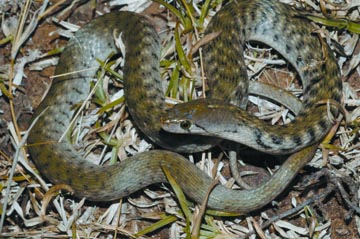Viper
Viper deadly poisonous snakes belonging to the family Viperidae, under order Serpentes. The family is divided into two subfamilies: Viperinae comprising the true vipers, and Crotalinae containing the pit vipers. Bangladesh has Russell's Viper (Chandra Bora), Vipera russellii and five or more species of pit vipers of genus Timeresurus. Bamboo Pit Viper (Bansh-Bora), Trimeresurus gramineus is a common species. The vipers have flat, triangular, large heads and constricted necks.

They have two pairs of unusually long poisonous fangs on the upper jaw that are kept folded horizontally against the roof of the mouth. These are like hypodermic needles. When need arises viper's muscular action opens the mouth, raises the fangs into perpendicular position and strikes the victim by injecting venom into the body of the prey, and then the fangs are folded back to their original positions. Viper venom is predominantly haemotoxic that attacks blood cells and the lining of the blood vessels thereby stopping the process of blood clotting, ultimately killing the victim.
Russell's Viper is a heavy, about 1.5 m long, colourful snake with oval-shaped brown body markings bordered by black and white or buff. Russell's Viper's bite can be fatal. It is widely distributed but uncommon. All pit vipers are of uniform green colour and may measure over 2 m. They have two facial or sensory pits that are located between the eyes and the nostrils. These are highly sensitive to heat. Russell's Viper has no pit organs. Vipers eat mostly 'warm-blooded' animals. They produce live babies. Its skin has a high market value. [Ali Reza Khan]
